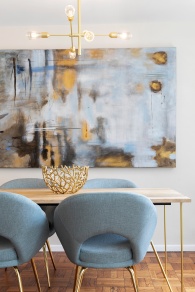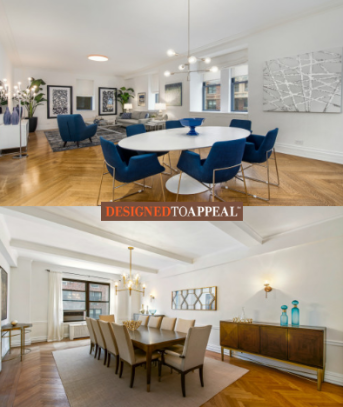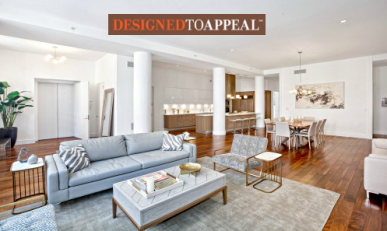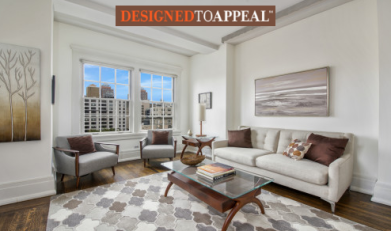When selling your home, there are three key strategies to a successful sale of your home.
What is a successful sale? A successful sale achieves these two objectives:
- Selling your home quickly
- Selling your home for your desired sales price
What are the three key strategies?
- PRicing your home correctly
- PRomoting it properly
- PResenting it at its best
And, you cannot implement just one or two of the strategies without the other(s) and expect to achieve to sell your home quickly and for your desired sale price.
Everyone wants to get the highest possible price for their home, though some approach setting the list price unrealistically. They list it at what they want to get, not what the market will bear. A home is worth only what someone is willing to pay for it.
The best thing you can do is to engage a real estate agent rather than trying to sell it on your own. A professional real estate agent knows the local market and what similar properties have recently sold for. They also know what properties in your condition have sold for.
What are the benefits of PRicing your home correctly?
- It attracts more potential buyers, and attracts them early in the sales cycle
- The more potential buyers, the greater the number of potential offers
- The more offers, the more potential for a bidding war
- Properties priced at their proper value make it easier for buyers to secure a mortgage
- There is no need for price reductions (a.k.a. “chasing the market”), which make the seller appear desperate to sell and the buyer to question if it’s still overpriced since it wasn’t priced properly to begin with
- It will sell more quickly than if it was not properly priced from the beginning
Over 90% of home buyers start their search on the Internet, so it’s important that your home be found, and once found, it is displayed attractively.
Again, using a professional real estate agent will increase the likelihood of both your home being found and that it is listed online in a way to attract buyers. Be sure to ask them for their marketing plan, which should include more than how it is listed on the internet.
There are many, many things that an agent can do to promote your home, and this is not an exhaustive list:
- Hiring a professional photographer who specializes in taking real estate listing photos
- Preparing the listing information in a way to highlight the best aspects of your home and neighborhood
- Holding open houses with fellow real estate agents and potential buyers, and knowing when to hold them
- Using social media to promote your home
- Mining their contacts to promote your home
- Preparing property-specific sales materials, including brochures or one page handouts
PResenting It At Its Best
So, you’ve priced the home properly and your agent comes up with a great marketing plan.
But what is going to create that powerful emotional connection a buyer feels when they walk in the door and just have to have it?
What’s an emotional connection?
- They picture themselves and their family living there.
- They want to live the lifestyle you’ve portrayed in your home. Let’s face it, most buyers are trading up, not down.
- This is where they want to live instead of just “this is a nice room”.
What’s an emotion you don’t want to evoke?
- The “ick” factor because your home is cluttered, dirty, outdated, smelly and/or in disrepair
- The feeling from the buyer that they are intruding on your personal space due to too many family photos, religious objects, trophies and collections
- The knee-jerk reaction of offering a reduced sales price because the home needs repairs and updating
- In a vacant home, NO emotional connection
- In a vacant home, bewilderment as to where and if their furniture will fit
- In a vacant home, wondering what the room is used for
If your home doesn’t look good to begin with, the best photographer in the world is not going to be able to mask that. And even if they can somehow enhance the appearance of your home with their photography, once a buyer steps in the door and sees it doesn’t look (or function) like what they saw in the photos, you will lose him or her.
A professional home stager knows how present your home in its best possible light by:
- Eliminating the “ick” factor and your personal taste from the home (remember, your home is now a product to be marketed)
- Knowing the target buyer market and appealing to that market through staging with the right furniture and decorative accessories
- Implementing inexpensive updates to enhance the home’s appeal without expensive renovations
Before Updates
After Painting and Replacing Light Fixtures
- Properly using furniture and decorative accessories to define the rooms
- Emphasizing the positive features of your home and downplaying the negative features
Furniture, decor and window sheers downplay the brick building out the window
Really, the sales process starts with home staging. By staging your home (PResenting it at its best), your photos will look great online which will help get buyers in the door (PRomoting it properly). Home staging can even increase the list price and ultimate sales price of the home (PRicing it properly).
© Copyright 2012 Designed to Appeal, LLC. All Rights Reserved.















 Subscribe to Monthly Newsletter
Subscribe to Monthly Newsletter


















![dart_board[1]](https://donnadazzo.files.wordpress.com/2011/04/dart_board1.jpg?w=112&h=150)




 You’ve removed your family photos so that buyers can imagine themselves living there rather than feeling they are encroaching on your private space.
You’ve removed your family photos so that buyers can imagine themselves living there rather than feeling they are encroaching on your private space.




































































![MC900230309[1]](https://donnadazzo.files.wordpress.com/2010/06/mc9002303091.jpg?w=140&h=150)






